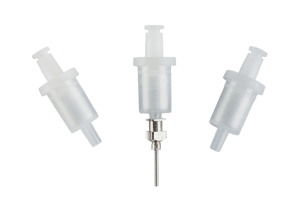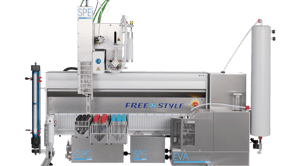FREESTYLE QuEChERS
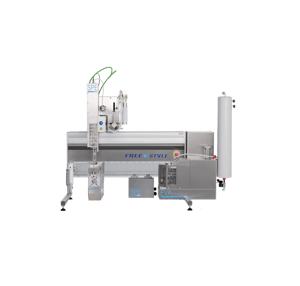
FLEXIBLE, PRECISE, MODULAR
FREESTYLE
QuEChERS
QuEChERS (Quick, Easy, Cheap, Effective, Rugged, and Safe) represents the world’s most commonly applied method for pesticide residue analysis in food and feed laboratories.
The dispersive QuEChERS procedure is established and very widespread, although it does not always ensure the perfect clean-up of certain samples, as matrix residues remain in the sample or supernatant. A non-dispersive approach using columns is one way to solve this problem. This leads to better matrix reduction and can also be automated better and more easily than the dispersive approach.
The fast, simple, inexpensive, effective, robust and safe QuEChERS method à la LCTech allows you to automate the sample clean-up of your pesticide analysis with precisely these features. Less manual work combined with high clean-up performance makes the new method even more straight-forward than the conventional QuEChERS method.
Another pesticide robotics system:
- Home
- Products
- Clean-up with Robotic Systems
- FREESTYLE Pesticides
- FREESTYLE QuEChERS
FROM A LABORATORY FOR ENVIRONMENTAL TESTING
"As Pesticide I, Pesticide II and Pesticide III can be automated with the LCTech FREESTYLE,
both the recovery rates and efficiency can be increased.”
ROBUST AUTOMATION
FREESTYLE HPLC Direct Injection
If you already own a FREESTYLE SPE system, you can easily upgrade it for the QuEChERS application at any time.
The QuEChERS application on the FREESTYLE is an exceptionally robust and cost-effective high-throughput solution for pesticide analysis in the laboratory with all the advantages of full automation.
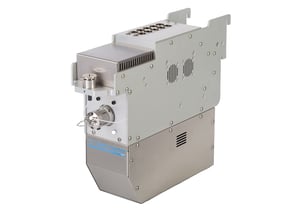
LC-MS/MS AND GC-MS/MS
Residue Analysis in Food and Feed
In addition, an online connection to LC can be achieved via the Direct Injection module and, if desired, an online evaporation is also possible beforehand. Miniaturisation allows the use of solvent to be reduced to a minimum and a greater capacity to be achieved in the FREESTYLE rack. This also means that less time is required per sample, which makes it possible to process up to 120 samples within 24 hours with a synchronised LC cycle.
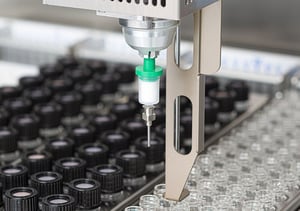
FASTER, MORE AFFORDABLE, LESS MANUAL WORK
In Sync with the LC-MS System for Perfect Sample Throughput
The QuEChERS method à la LCTech is even more straight-forward than the conventional QuEChERS method.
Fully automated clean-up step in approx. 10 minutes.
Perfect Sample Throughput
By using the optional FREESTYLE Direct Injection module, the QuEChERS steps in the FREESTYLE system and the analysis in the LC-MS system can overlap with each other. This enables perfect sample throughput to be achieved.
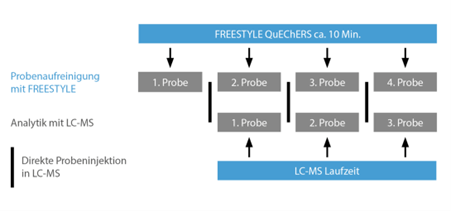
THE ROBUST AND COST-EFFECTIVE SOLUTION
Automated QuEChERS Method
The proven FREESTYLE system, on which the QuEChERS method is automated, impresses with ease of use, is low-maintenance, and is cost-effective thanks to low acquisition and operating costs and round-the-clock processing.
Alongside all conventional standard matrices such as fruit and vegetables, it is also possible to process difficult dried matrices such as tea, spices or “TCM” as well as very greasy samples, which could not be processed using the QuEChERS method until now.
The Right Column for the Best Results
QuEChERS à la LCTech is based on a non-dispersive method and has specially adapted columns. This covers almost all matrices within pesticide analysis in food and feed
- Pesticide I
Classic QuEChERS column for fruit and vegetables - Pesticide II
Special QuEChERS column for tea, spices and hops - Pesticide III
Extra QuEChERS column for matrices with a high fat content (> 10%)
